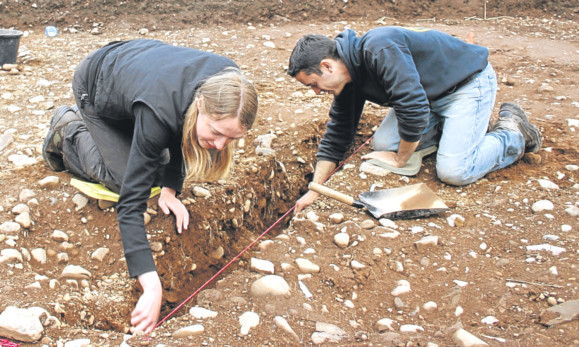Treasures from Forteviot’s Pictish past are to take centre stage in a major new exhibition.
Cradle of Scotland will feature a handbell and dagger found near the Strathearn village.
No place has a better claim to be the ‘cradle of Scotland’ than Forteviot, where a Pictish royal palace was built alongside one of the most impressive ancient ceremonial complexes in Britain.
Cropmarks, sculptures, buried structures and artefacts all reveal the important story of Forteviot over three millennia.
Although in modern times the village is dominated by 1920s architecture, the area was once home to the Pictish kings. Scotland’s first king, Kenneth MacAlpin, is said to have died at the palace.
In 2009 archaeologists uncovered a possible royal burial tomb, containing human remains atop a bed of white quartz pebbles and an interwoven lattice of birch bark.
The exhibition, which takes place in Perth, explores the results of 10 years’ work by Glasgow University’s Strathearn Environs and Royal Forteviot (SERF) project.
Led by a team of archaeologists from the university, the project examines the rich archaeological landscapes of Forteviot and has resulted in a number of major new archaeological discoveries.
Through excavation, aerial reconnaissance, radiocarbon dating, archaeological reconstruction and 3D visualisation, Cradle of Scotland explores the evolution of society from loosely connected communities in pre-history to the centralised kingdom of historic Alba.
Highlights include a 3D model of Constantine’s Cross, fragments of monumental sculpture found at Forteviot including the Forteviot cross, the Forteviot hand bell, the Forteviot dagger and the reconstruction of the cist or burial pit excavated in the village.
The exhibition has been jointly curated by the Hunterian Museum and Art Gallery and Perth Museum and Art Gallery and is free to attend.
It will run until June 26 at Perth Museum and Art Gallery.
